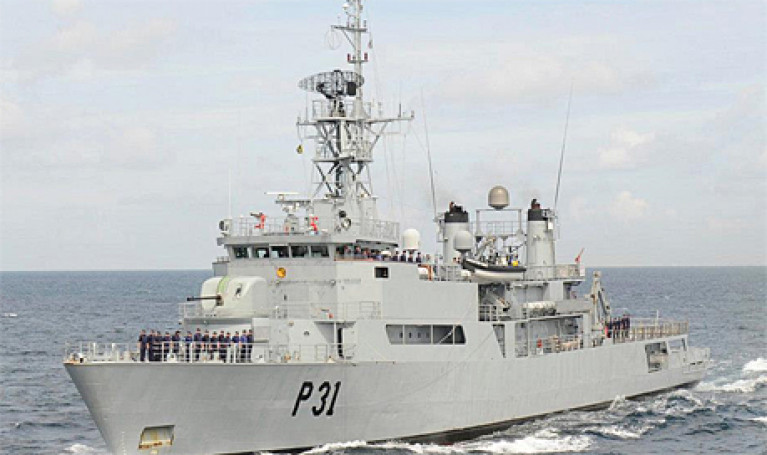Displaying items by tag: €200m newbuild
Irish State Moves Closer to Purchase €200m Multi-Role Vessel (MRV) that Will be Largest in Naval Service History
The State’s purchase of the Naval Service’s largest ship in its history, which is designed to respond to humanitarian crisis, notably overseas, is set to move forward when the release of documents are to be issued across an EU platform.
The Multi-Role Vessel (MRV) project reports Journal.ie has been in the planning with the Department of Defence for many years (incl. Afloat adds a 'blueprint' based on a Royal New Zealand Navy MRV) but has stepped up a gear after the recent Commission on the Defence Forces.
According to sources, the MRV is anticipated to feature a large landing deck for helicopters, in addition the provision of other possible facilities, among them a roll-on-roll-off (ro-ro) option. This would enable vehicles like those of the Defence Forces armoured personnel carriers to be loaded on board to be tasked on deployment missions.
The newbuild, in such missions, would have the capabilities to respond to major disasters and humanitarian crises, similar to vessels that have also been assigned in the rescue of civilians caught up in warzones.
Also anticipated is that the MRV will have a large medical facility on board and to aid this, that a specialist command and control systems be incorporated in the event of large-scale incidents.
Contact was made to the Department of Defence for a statement, though a Government source, has confirmed that in the coming days, is to see documents released in regard to the tender process for the MRV project.
The newbuild project which is known as a Prior Information Notice, will be examined by prospective shipbuilders.
Speaking in the Dáil last year, Minister for Defence and Foreign Affairs, Tánaiste Micheál Martin said that the ship would replace the Naval Service former flagship LÉ Eithne, which Afloat adds was decommissioned in 2022.
The cost for the MRV project is estimated to be €200m as previously reported, however it is understood that the final figure will not be decided until the tender process to prospective shipbuilders is completed.
More here on the proposed MRV newbuild in addition to Afloat's coverage of the Royal Netherlands Navy HNLMS Karel Doorman which visited Cork Harbour in 2021 and again the following year.
A tender has finally been implemented by the Department of Defence for consultants to help it procure a €200m multi-role vessel (MRV) for the Naval Service.
As far back as 2015, the White Paper on Defence identified the need to replace the ageing Naval Service flagship LÉ Eithne with a new vessel, such as an MRV, which would be capable of carrying troops, freight and a helicopter.
The Department of Defence has gone to tender to seek consultants to provide the best design and value for money for the new ship, which it says will be “tailor-made to meet the requirements of the Defence Forces.”
The department said the design specification of the ship must make it “capable of providing a flexible and adaptive capacity for a wide range of maritime tasks, both at home and overseas.”
In addition the Irish Examiner has more and Ireland's membership of the UN Security Council.
























































